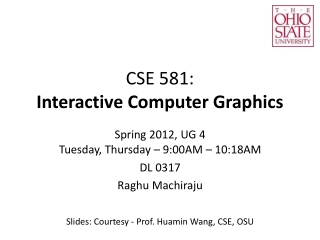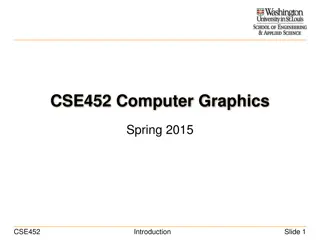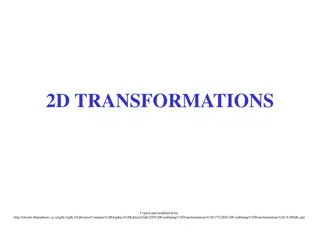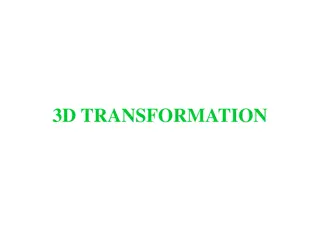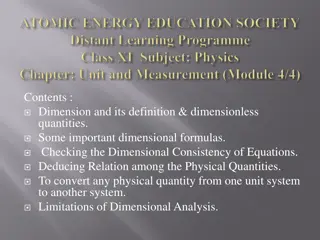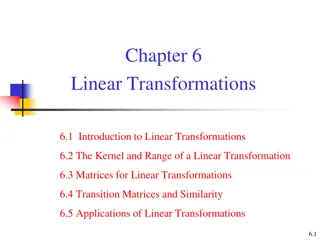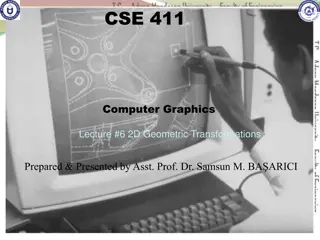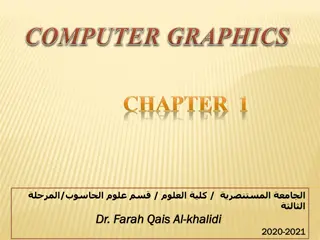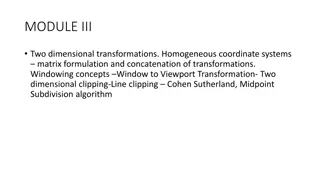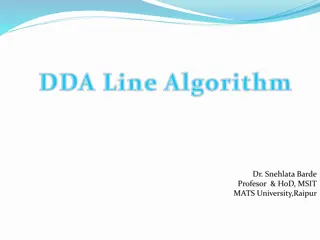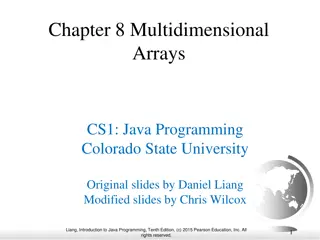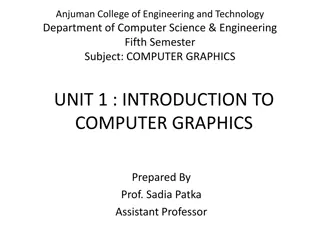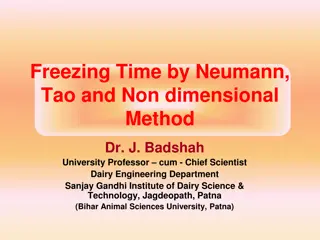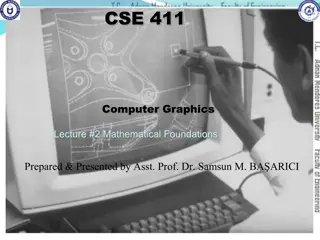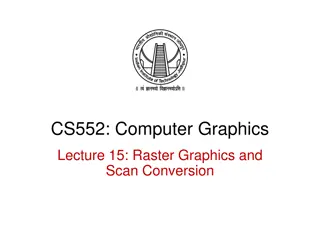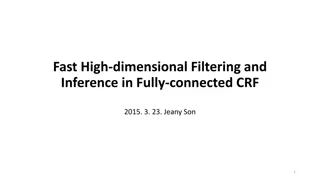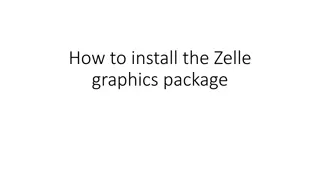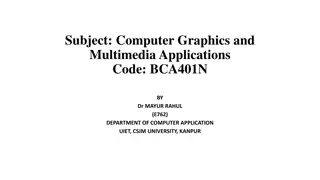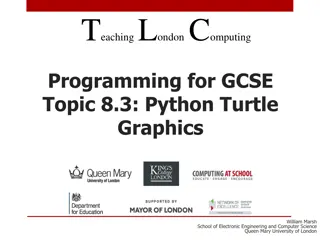Two-Dimensional Transformations in Computer Graphics
Explore the fundamentals of two-dimensional transformations in computer graphics, covering translation, scaling, rotation, reflection, and shearing operations. Learn how these mathematical operations enable the simulation of movement and manipulation of objects on the plane, essential for various computer graphics applications.
Download Presentation

Please find below an Image/Link to download the presentation.
The content on the website is provided AS IS for your information and personal use only. It may not be sold, licensed, or shared on other websites without obtaining consent from the author.If you encounter any issues during the download, it is possible that the publisher has removed the file from their server.
You are allowed to download the files provided on this website for personal or commercial use, subject to the condition that they are used lawfully. All files are the property of their respective owners.
The content on the website is provided AS IS for your information and personal use only. It may not be sold, licensed, or shared on other websites without obtaining consent from the author.
E N D
Presentation Transcript
Dr. Farah Qais Al-khalidi 2020 CS / /
Computer Graphics chapter 3 Two Dimension Transformation Fundamental to all computer graphics systems is the ability to simulate the movement and the manipulation of objects in the plane. These processes are described in terms of : 1. Translation 2. Scaling 3. Rotation 4. Reflection 5. Shearing Our object is to describe these operations in mathematical form suitable for computer processing. 71
4- Reflection and Shear Transformations The three basic transformations of scaling, rotating, and translating are the most useful and most common. There are some other transformations which are useful in certain applications. Two such transformations are reflection and shear
4.1 Reflections A reflection is a transformation that produces a mirror image of an object relative to an axis of reflection. We can choose an axis of reflection in the x-y plane or perpendicular to the x-y plane
Example : Reflect the point P(3,2) in A- X axis; B- Y axis; C-origin; D-line Y=X;
4.2 Shearing It produces a distortion of an object. There are two types of shearing 1- Y- shearing It transforms the point (X, Y) to the point (Xnew, Ynew) where Xnew= X Ynew= Y+Shy * X where Shy 0 Y shearing moves a vertical line up or down depending on the sign of the shear factor Shy. A horizontal line is distorted into a line with slop Shy. And vis versa.
2- X- shearing It transforms the point (X, Y) to the point (Xnew, Ynew) where Xnew= X+Shx * Y where Shx 0 Ynew= Y
Example : Share the object (1,1) , (3,1) , (1,3) , (3,3) with a: Shx=2 b: Shy=2
Thank you Any Questions ?


